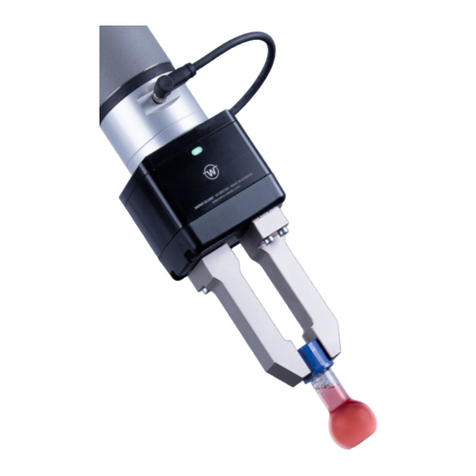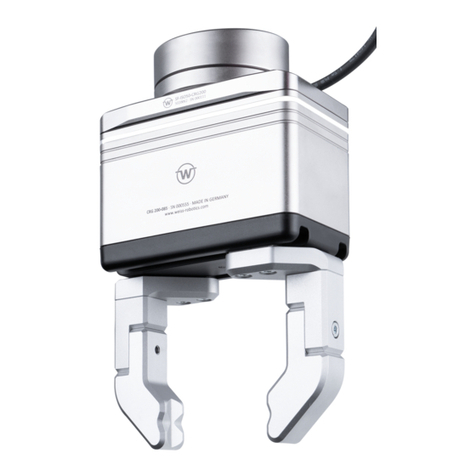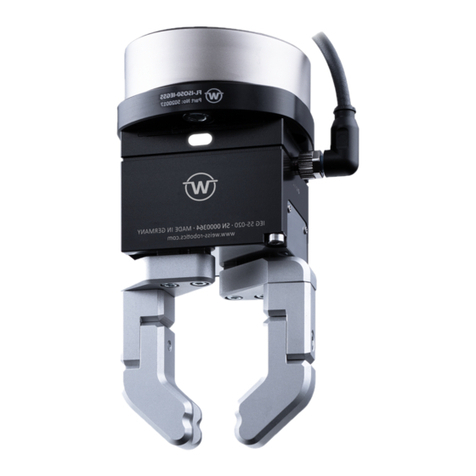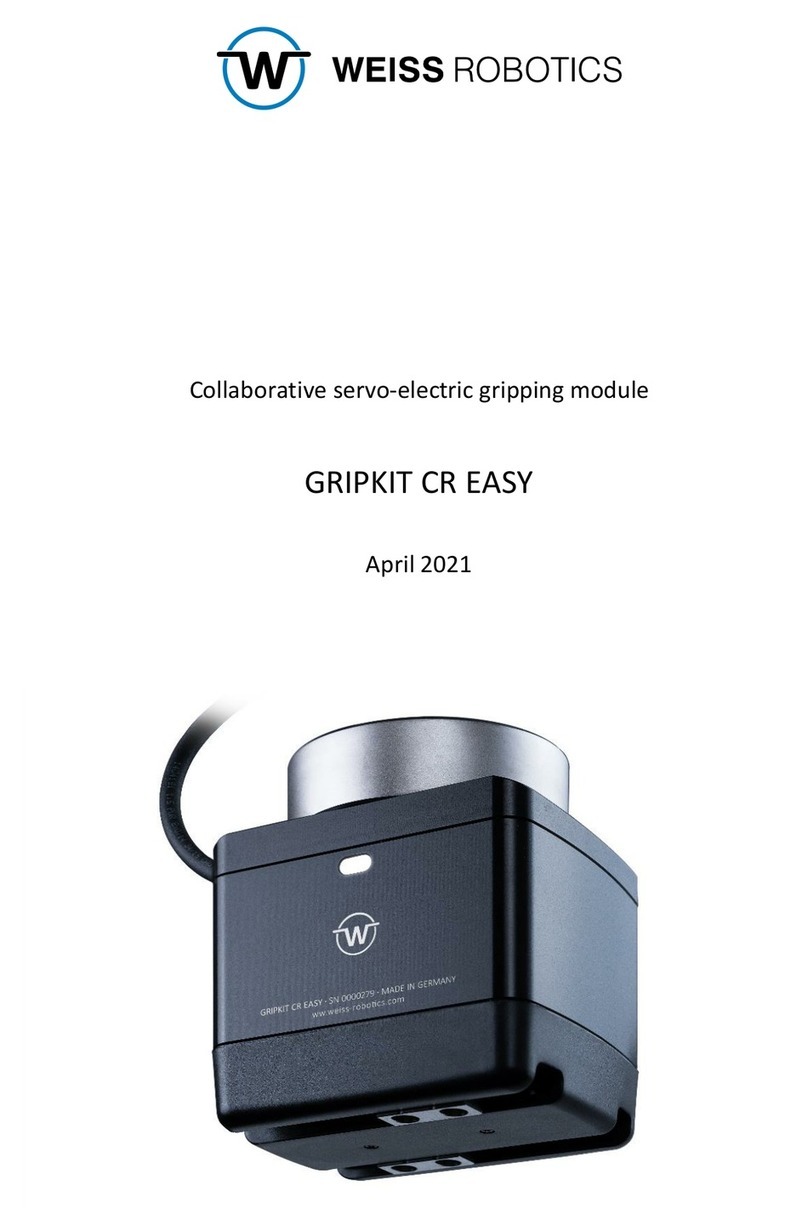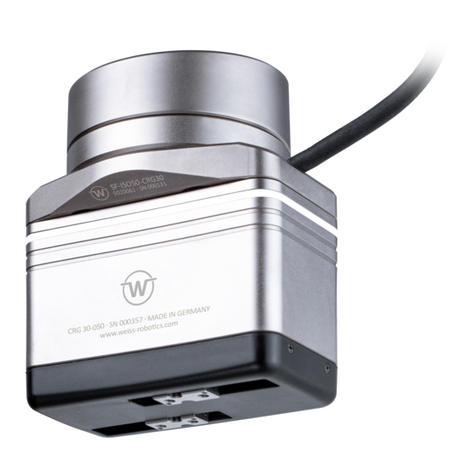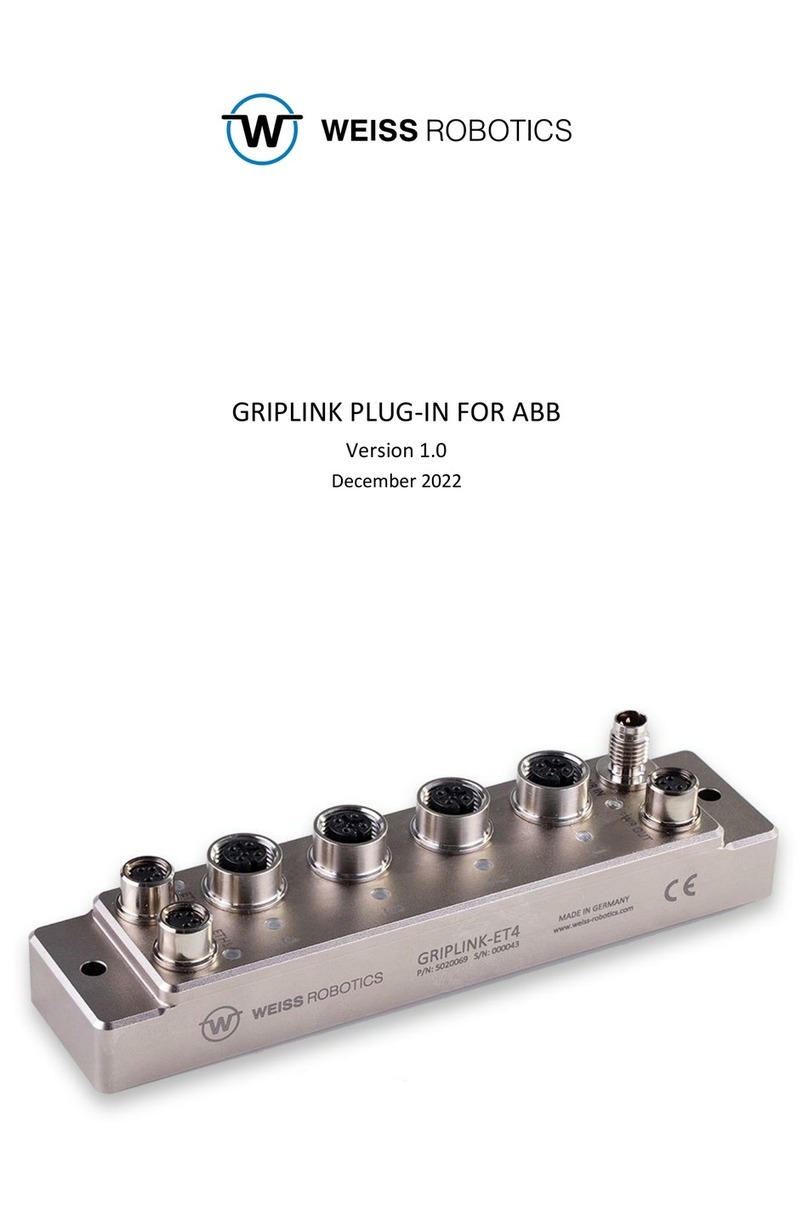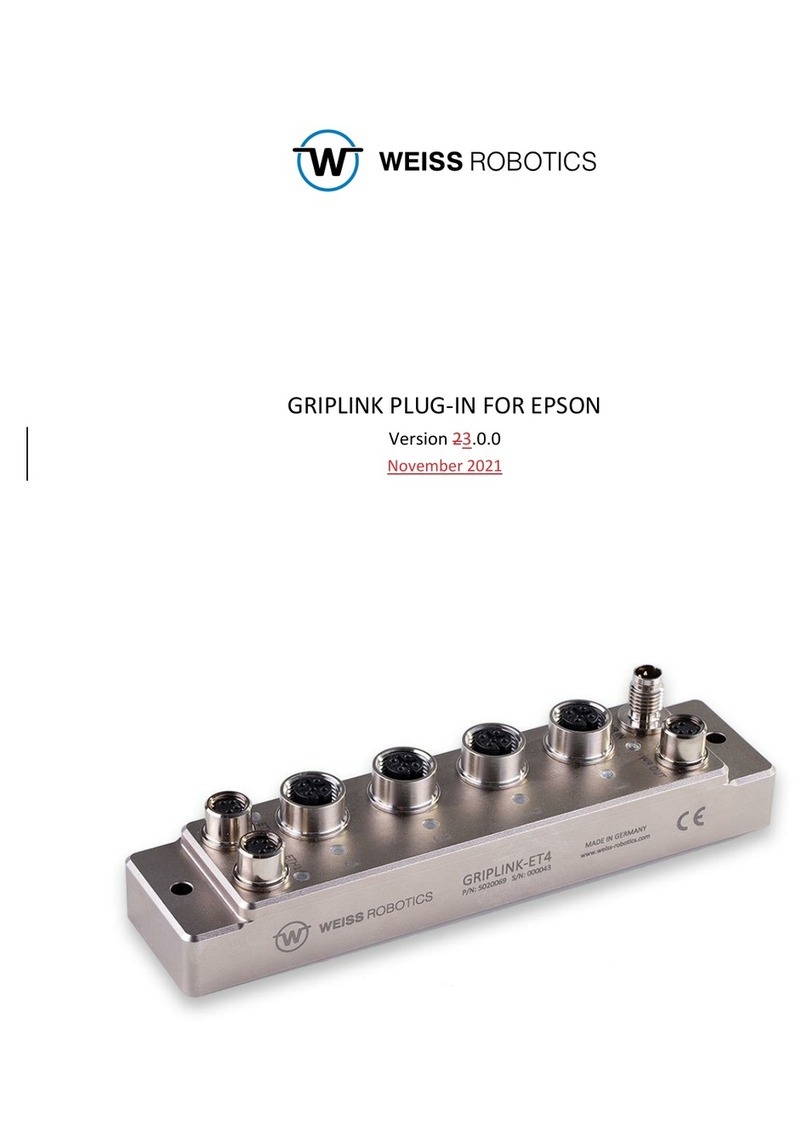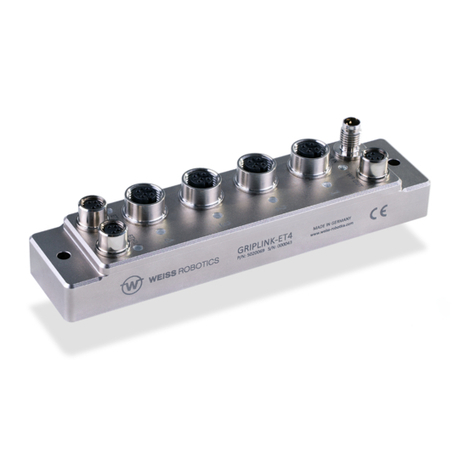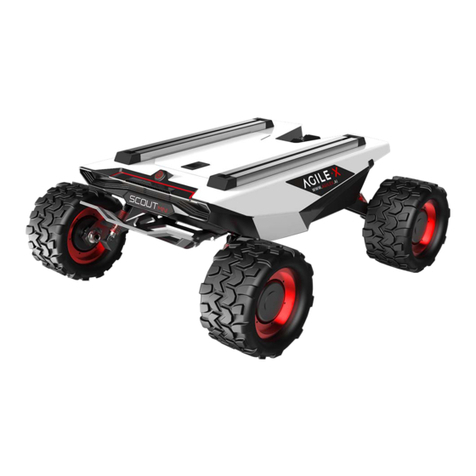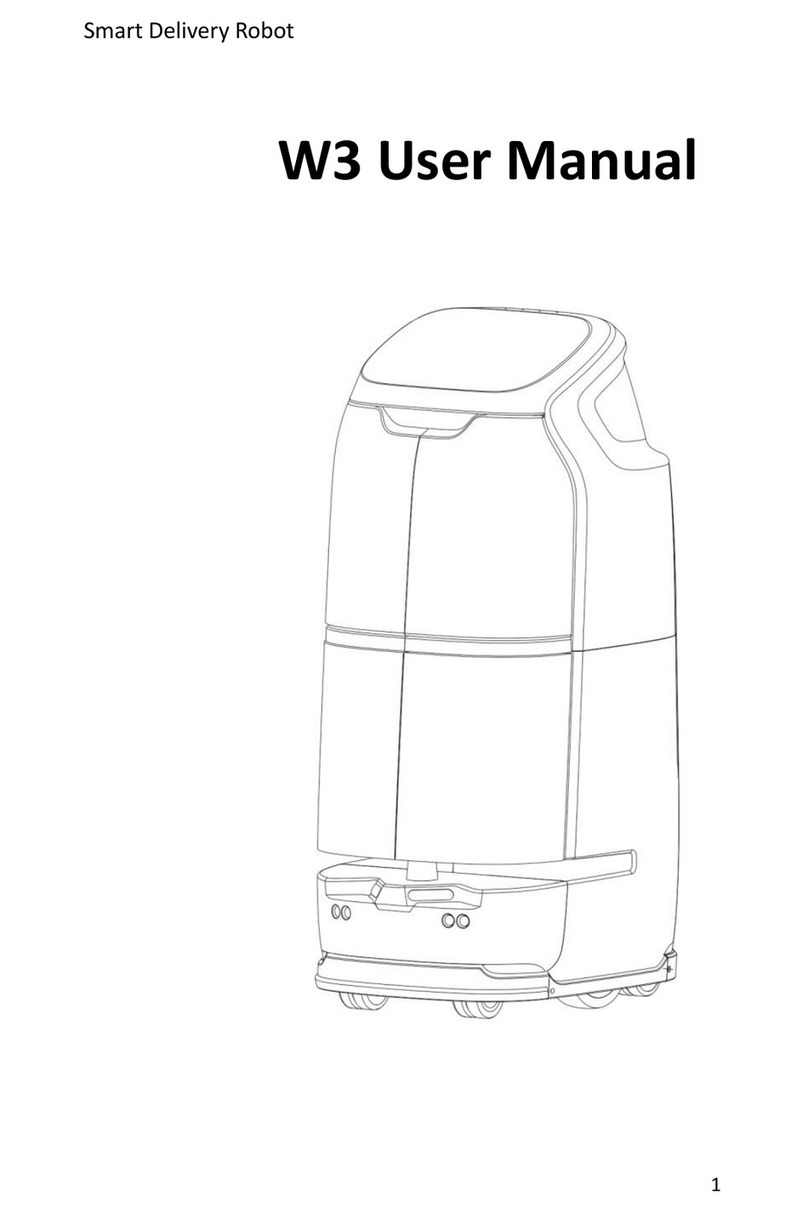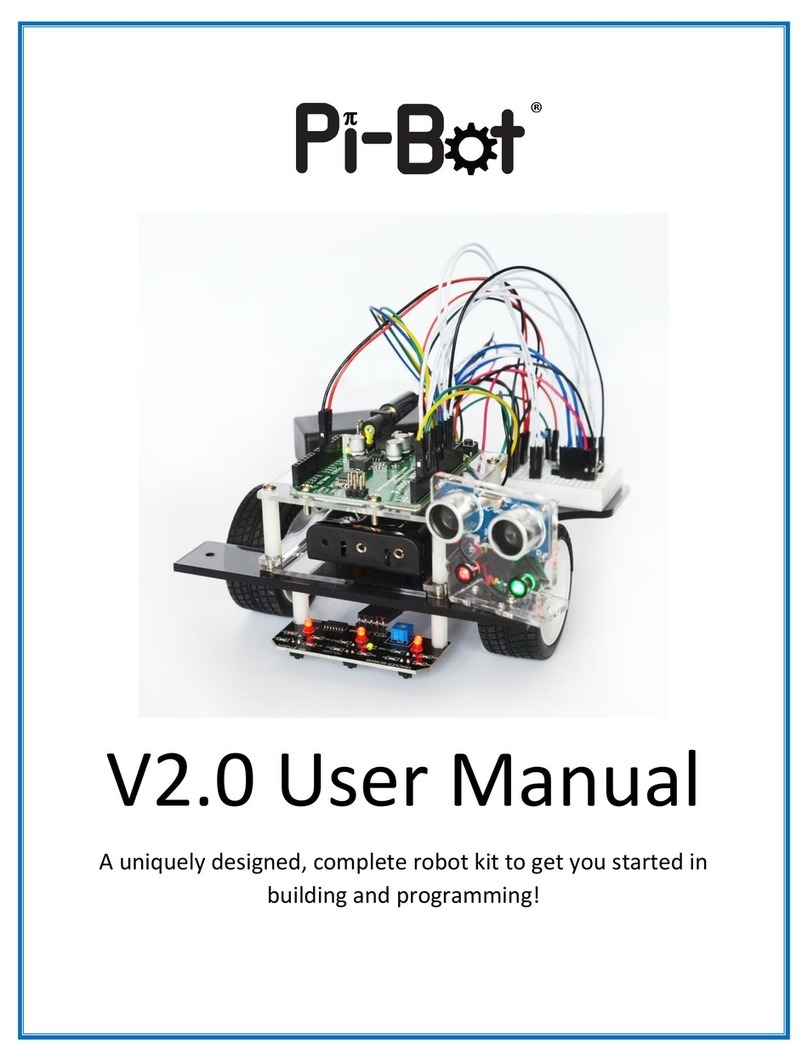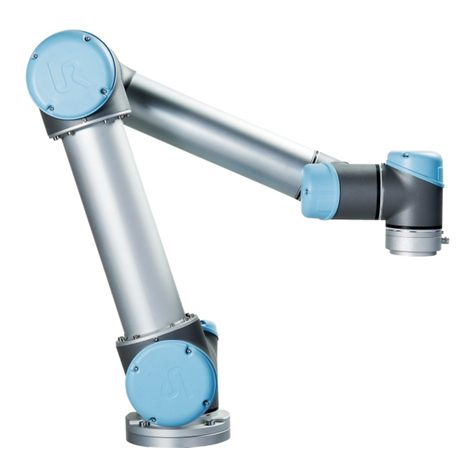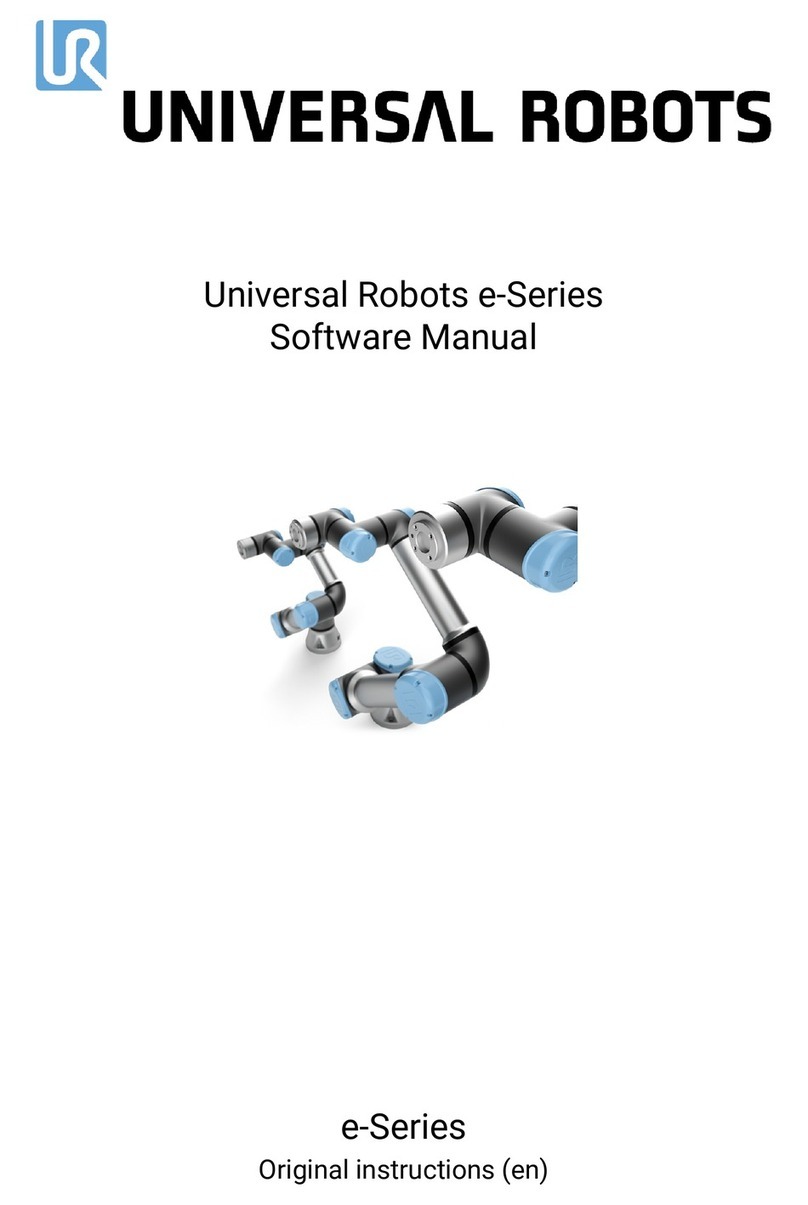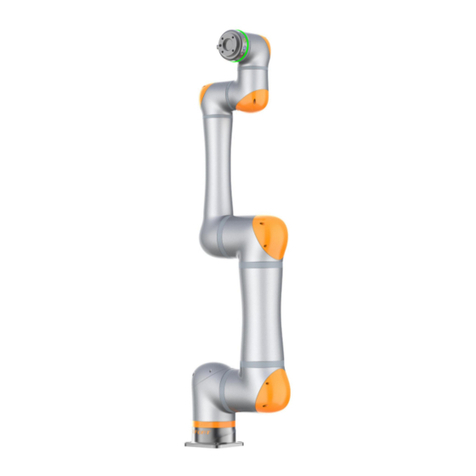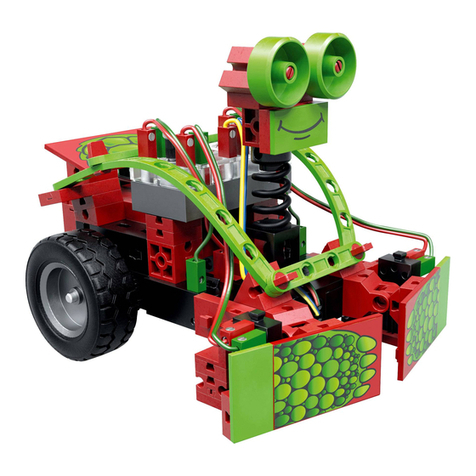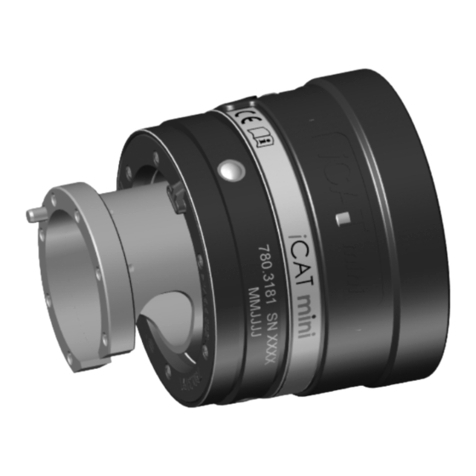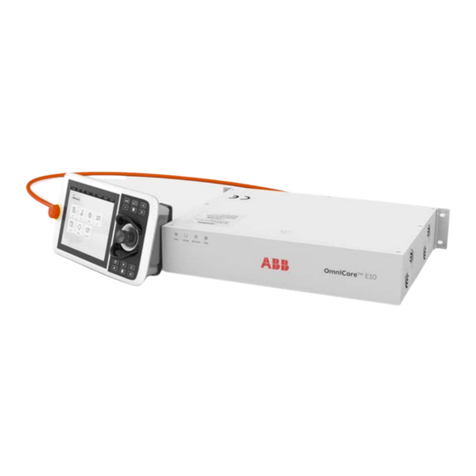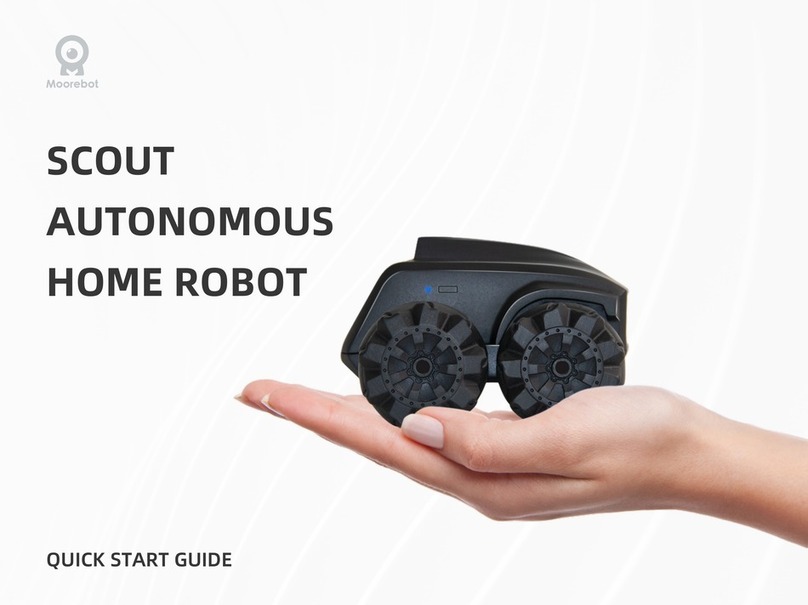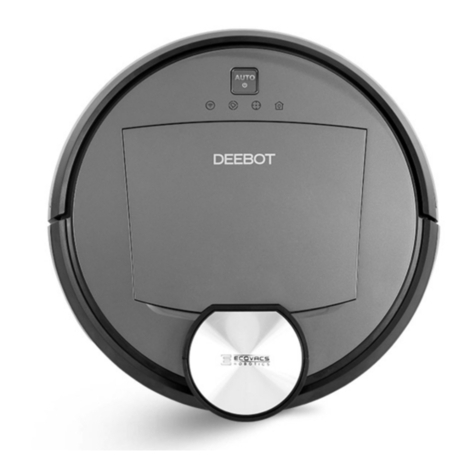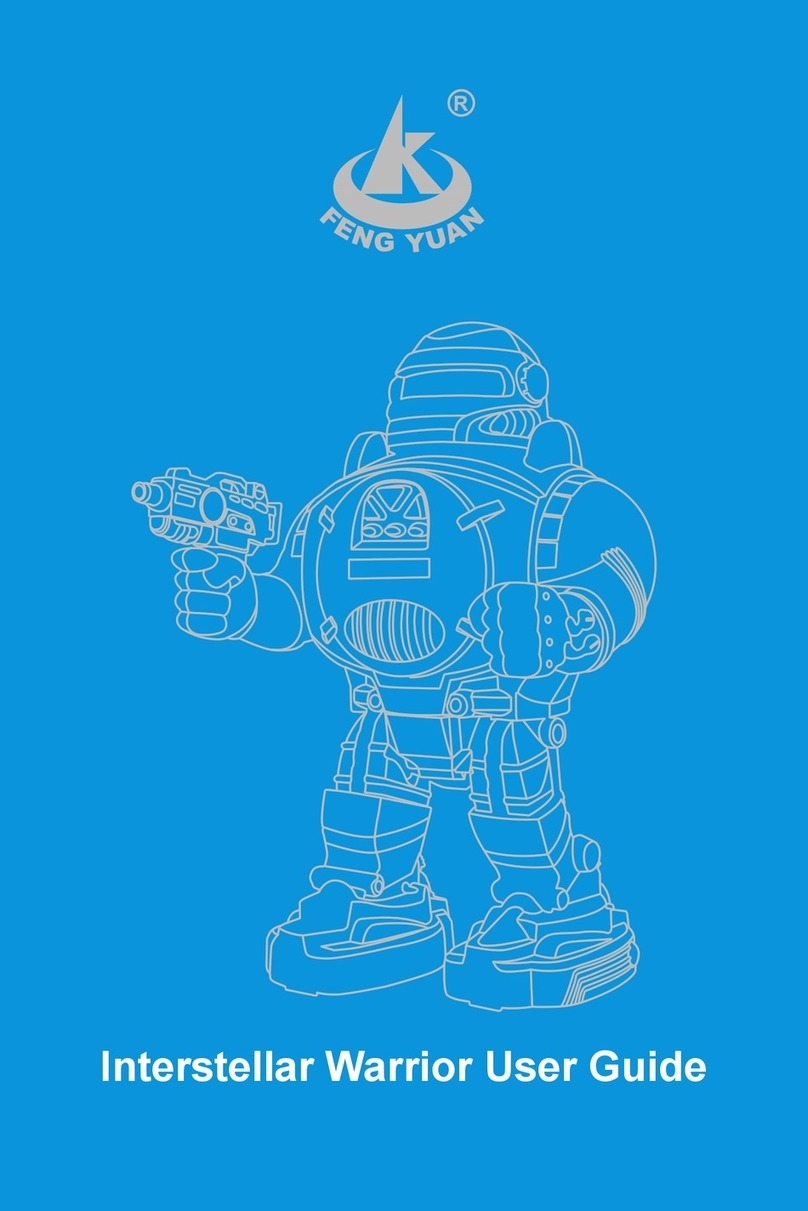
- 2 -
7.3 State visualization by luminous ring ............................................................................19
7.4 Non-volatile Memory .................................................................................................19
8Interface Description IO-Link............................................................................ 21
8.1 Cyclic Process Data .....................................................................................................21
8.1.1 Output Data (IO-Link Master to Gripping Module) ............................................................. 21
8.1.2 Input Data (Gripping Module to IO-Link Master) ................................................................ 22
8.2 Acyclic Process Parameters and System Commands.....................................................24
8.2.1 Remanent Storage of Acyclic Process Parameters.............................................................. 25
8.2.2 Standardized Acyclic Process Parameters........................................................................... 25
8.2.3 Device-specific Acyclic Process Parameters ........................................................................ 26
8.2.3.1 Motion Parameters.......................................................................................... 26
8.2.3.2 Grip Parameters............................................................................................... 28
8.2.3.3 Virtual Position Switches.................................................................................. 30
8.2.3.4 Visualization with luminous ring ...................................................................... 31
8.2.3.5 Diagnosis Parameters ...................................................................................... 34
8.2.3.6 Protocol Memory............................................................................................. 36
8.2.3.7 Extended Configuration Parameters................................................................. 37
8.2.4 System Commands .............................................................................................................. 37
8.3 System Events (IO-Link Events) ...................................................................................38
9Control of the Gripping Module ....................................................................... 40
9.1 Gripping Commands ...................................................................................................40
9.2 Position Sensors .........................................................................................................41
9.3 Reference Run............................................................................................................41
9.4 Virtual Position Switches ............................................................................................41
9.5 Gripping State ............................................................................................................42
9.6 Parameterizable Grips ................................................................................................43
9.6.1 Gripping Direction ............................................................................................................... 44
9.7 Grip Part ....................................................................................................................45
9.8 Release Part ...............................................................................................................45
9.9 Troubleshooting .........................................................................................................46
9.10 Activating and Deactivating the Module (Setup Mode)................................................47
9.11 Gripping force retention .............................................................................................48
9.12 Visualization with illuminated ring ..............................................................................48
9.13 Design of the Gripping Process....................................................................................49
9.13.1 Application Example External Gripping ............................................................................... 50
